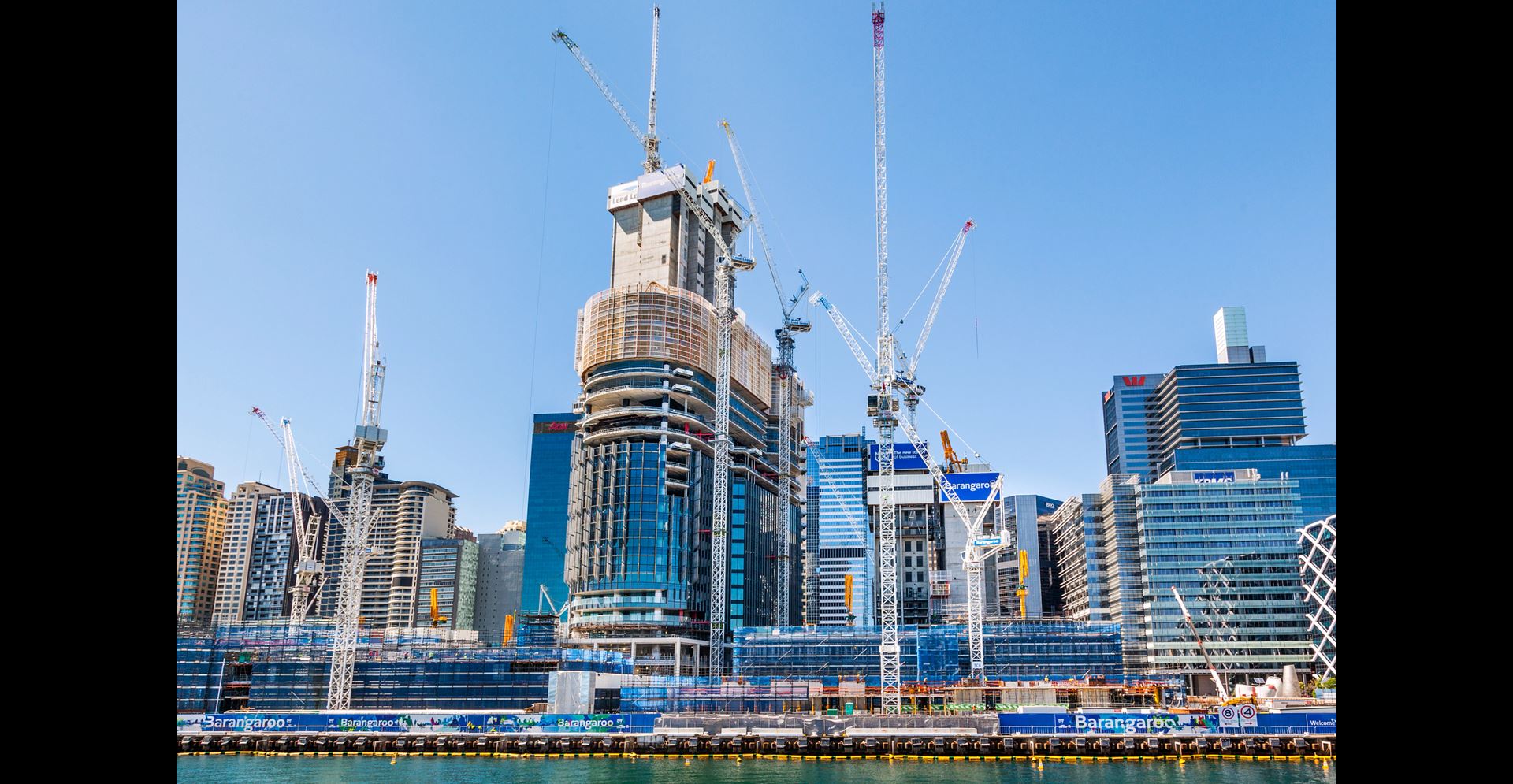We are all enamoured with the value of an asset – a road, a building, a bridge – and its contribution to productivity, economic opportunity and inclusion. However, each asset is made of many parts – parts that come from all over the world, each with its own associated costs. These are absorbed into the asset, largely hidden from the taxpayer or the future owner, but the impact of fluctuating or inconsistent markets can be felt in rising costs, project delays and appetite to invest.
This is why the Arcadis International Construction Cost Index is valuable as a benchmark of cost to build across 100 global cities and to assess what this means for the construction sector in the future.
Australia, as always, has its own remarkable trends that set it apart from the rest of the world. In 2022, the value of total construction work in Australia was $247.1Bn. This was an 11% increase on construction output on the previous year, reflecting that this was the Covid recovery year as Australia came out of lockdown much later than many other countries.
Yet this growth wasn’t without its challenges. Reduced market capacity, supply chain issues and rising inflation sharply increased the cost of building projects across the board during last year. Inflationary pressures on materials should ease in the first half of 2023 as supply constraints have been largely resolved – although high energy cost inputs remain a challenge.
While the residential sector has cooled there is growing investment in transport and social infrastructure, and this is providing most of the demand into 2023 and beyond. However, as opportunities increase, capacity will be stretched further, leading to a second wave of inflation affecting both labour and staffing costs on projects. We also expect to see demand for net zero related investment increase over the next 12-24 months, so specification changes influenced by carbon calculations may begin to impact costings as well.
Labour shortage a global challenge
One of the themes emerging from the International Construction Cost Index is a shortage of construction workers to deliver the planned program of construction and infrastructure projects. In Australia, unemployment at the end of 2022 was at 3.4% – its lowest level in 50 years. Yet, labour scarcity is the single biggest issue facing construction companies in the race to capitalise on demand. According to Infrastructure Australia’s latest Market Capacity report, demand for major public infrastructure projects rose by $15Bn in 2022 to $23Bn in 2023, with 84% of that investment concentrated in New South Wales, Victoria and Queensland. Coincidentally, these states include the Australian cities that are amongst the top 50 most expensive to build in according to Arcadis’ latest Index.
As of October 2022, public infrastructure projects faced a shortage of 214,000 skilled workers – this is set to become more acute as labour demand is projected to increase by 42,000 to a peak of 442,000 in 2023. The skilled labour gap isn’t shrinking. If anything, it’s getting larger. Key occupations in short supply include general construction labour, civil engineers, structural engineers, as well as procurement specialists and project managers. Meanwhile, Master Builders Australia estimates an immediate shortage of 80,000 tradespeople in construction overall, with more than 470,000 needed to enter the industry in the next five years to meet demand.
The labour capacity gap is particularly acute in Queensland, where the state government has committed almost $60Bn to major housing and infrastructure projects in the next decade, in addition to the $7Bn allocated for new and upgraded venues for the Brisbane Olympic and Paralympic Games in 2032. Some fear the severe labour shortages could put this major global event in jeopardy.
Increasing the workforce and improving participation
To meet the challenges of workforce shortages in a low unemployment environment, governments need to think outside the box and use a variety of levers.
Master Builders Australia have noted that “bottlenecks in the country’s migration system need to be addressed as a matter of priority”. They have called for the lifting of the migration cap to 200,000 places in 2023-24 and 2024-25 and improving pathways for overseas talent to enter the country by recognising comparable international qualifications.
While the Federal Government is working on migration solutions, the existing workforce needs to be upskilled and diversity increased. Currently, about 13% of the workforce in the Australian construction industry is female, and many of the jobs on the skills shortage list are struggling with gender imbalances. The Women Building Australia program, funded through a federal government grant and delivered through Master Builders Australia, offers several initiatives to help women break into the industry and thrive once they are there. Programs include a mentorship program, a female-led business register, business resilience training and a harassment and discrimination support line.
Another key area of focus needs to be raising completion rates for construction trade apprenticeships, which are currently at a shocking rate of just over 50%. We look forward to how the federal government’s budget next month addresses this challenge.
Improving the productivity gap
The construction industry has long been plagued by falling productivity – and this is arguably a huge opportunity that needs to be unlocked. Productivity today is lower than it was in 1990 – and the gap between construction and other industries has been widening. The Australian Constructors Association’s recently published paper Disrupt or Die included a detailed analysis indicating that, between 1990 and 2021, other industries improved their productivity by more than 33%, while construction actually fell by almost 2%. According to the ACA, “improvements to the industry’s productivity performance could save Australia $47Bn annually.”
One of the ways to improve productivity is to provide greater investment in innovation and digitisation, including off-site prefabrication and Modern Methods of Construction. This will enable faster, safer and more efficient construction, as well as improve build quality, reduce waste and support the creation of a more digitally skilled workforce. An added bonus is that such a significant shift in approach would make the industry much more attractive to both women and younger generations.
Moving the dial on value for money
Construction has long been of an adversarial nature. One-sided contracts, inequitable risk allocation, the exponential increase of project governance, and an adherence to selecting the lowest cost rather than the tender that will provide the best value are all features that have plagued the industry for decades. A focus on bottom-line cost has created a race to the bottom across the industry, but there are several other factors that should be considered in determining what will provide best value. Sustainability, embodied carbon, the operational cost over an asset’s lifecycle, and increasing diversity and inclusion should all be considered. A significant proportion of investment will be driven by government departments over the next decade. Therefore, governments are uniquely placed to act as model clients, increase diversity and workforce participation, embrace and reward innovation, and to ultimately drive the cultural shift that is required across the industry.
Conclusion
While the inflationary impacts of raw material shortages and tight logistics are beginning to wane, there is still a great deal of uncertainty due to unprecedented energy prices, particularly influencing energy intensive materials such as cement and steel. A consistent hangover from the last two years is the exceedingly tight labour market in many countries. From the UK and Europe to the US, and from Hong Kong to Australia, the lack of available labour to deliver planned work programs is high on the agenda for many clients and their teams.
Familiar levers to improve recruitment are being investigated in many countries but this needs to be combined with improved levels of productivity and efficiency. Governments and the private sector need to work together to unlock the value that can be generated through the adoption of technology and greater diversity in the construction sector.
And finally, we must rethink the value derived from our assets, invest in innovative solutions, and champion solutions that will deliver long-term outcomes for communities and the construction sector as a whole. This will require clients to look beyond the tenders boasting the cheapest and the fastest options. As we are increasingly coming to learn, there are no guarantees in this market and a critical review of procurement options beyond the immediate benefits will generate the best long-term returns.
About the International Construction Costs Index
The Arcadis International Construction Cost Index offers a comparison of building costs across 100 global cities. The report provides regional construction market insights and highlights examples of investment priorities in major cities around the world.
The full report, published in April 2023, can be accessed via arcadis.com. The index is based on a survey of construction costs of 20 building types, based on local specifications and denominated in US dollars to enable comparison. The index compares the costs of delivering a building function in different locations rather than a like-for-like comparison of the costs of a similar type of work.

ON-DEMAND WEBINAR



